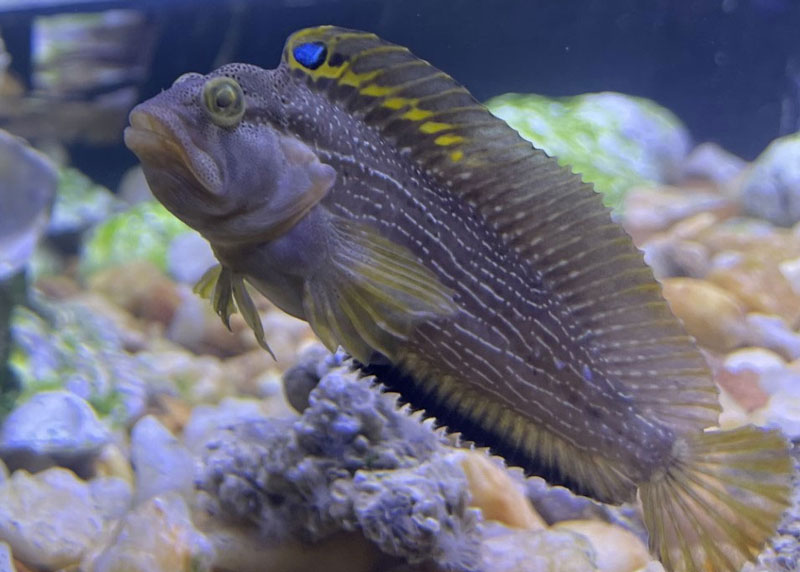After a lifetime of dreaming and procrastination, I finally did it: I built a boat with my own two hands. I’ll admit that I cheated a bit by buying a kit, which included all the wood and detailed plans for how to cut and mount each and every piece. I must also disclose that I made plenty of mistakes. Many pieces and parts had to be recut, and a large debris pile rapidly formed in my workspace. But I did it! I completed a hand-crafted Chesapeake Bay deadrise workboat.
Then I smashed a hole in the bottom, weighed it down with rocks, and sunk it.
All 24 inches of that Wye River Models hand-crafted glory now resides on the bottom of my aquarium, surrounded by filtering oysters, swaying ghost anemones, and fan-waving barnacles. Striped blennies and skillet fish swim in and out of the cabin and mud crabs crawl through its holed bottom. Bay anchovies, mummichog minnow, and silversides circle above the bent VHF antennae and ¾” scale spotlight. And every time I glance its way I’m amazed at the richness of life we enjoy here in Chesapeake Country; each and every resident came straight out of the South River.

To stock the tank, my daughter and I pulled an eight-foot seine net through a few yards of very unremarkable, murky-looking, knee-deep water in the river — and came up with dozens of flipping finfish and grass shrimp on just about every pass. The net held plenty of surprises, too like quarter-sized blue crabs and inch-long croaker. We anglers gaze across the Bay’s waters and see endless ripples, often clueless as to just how shockingly dense the life is beneath those waves. And we’re the lucky ones. Being anglers, we see far more of it than most people. Decades ago when I worked for the Lady Maryland Foundation (now called Living Classrooms) we took groups of school kids out on the Patapsco, and it never failed to amaze me how few of them had any inkling of what swam in their own backyard. In a class of 20 children there might have been one or two who had been fishing on the Bay and had seen bluefish or spot, but even they were left slack-jawed by the loads of life we pulled up in our small otter trawl.
How many of us have ever held a hogchoker? Those flounder-like fish literally pave the bottom in some areas, yet we rarely see them because they don’t feed in such a way that they’d ever take a hook. How many of us have spied a skillet fish? Unless you’ve handled piles of oyster shell freshly pulled out of the water, chances are you’ve never encountered one. And those blennies? Though untold numbers live in the Bay they’re a mystery to 99.9 percent of the people living in its watershed.
This, fellow anglers, is one of the main reasons why our politicians and our society lack the will to do what is necessary to restore Chesapeake Bay. It’s why we sink $10 million dollars into efforts that require $100 million. It’s why there are hundreds of millions of tons of sediment laced with nitrogen and phosphorus sitting behind Conowingo dam at this very moment. It’s why sewage spills so significant they trigger health warnings still occur each and every summer up and down the Bay’s shores. And it’s most certainly one of the reasons why you and I have to sort through a morass of rules just to go fishing, as our regulators try desperately to find ways of supporting fish populations that struggle to survive in a degraded aquatic environment.
Here’s your call to action: This summer, find a neighbor, co-worker, or friend who has never been out on the Bay, and take them fishing. Give them a glimpse of what’s out there. Help them understand that underneath those waves there’s a vibrant world of life that deserves our attention, our effort, and our support. If you have kids, get a seine net to haul with them. And if you have an old aquarium sitting dry and dusty in your garage, start building a boat. Because the only way we can ever hope to restore the Bay is by getting the other 18 million people living in its watershed to see what’s out there and really, truly care.